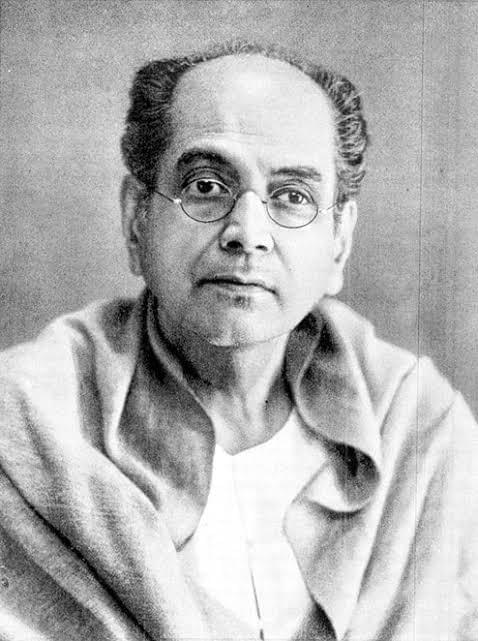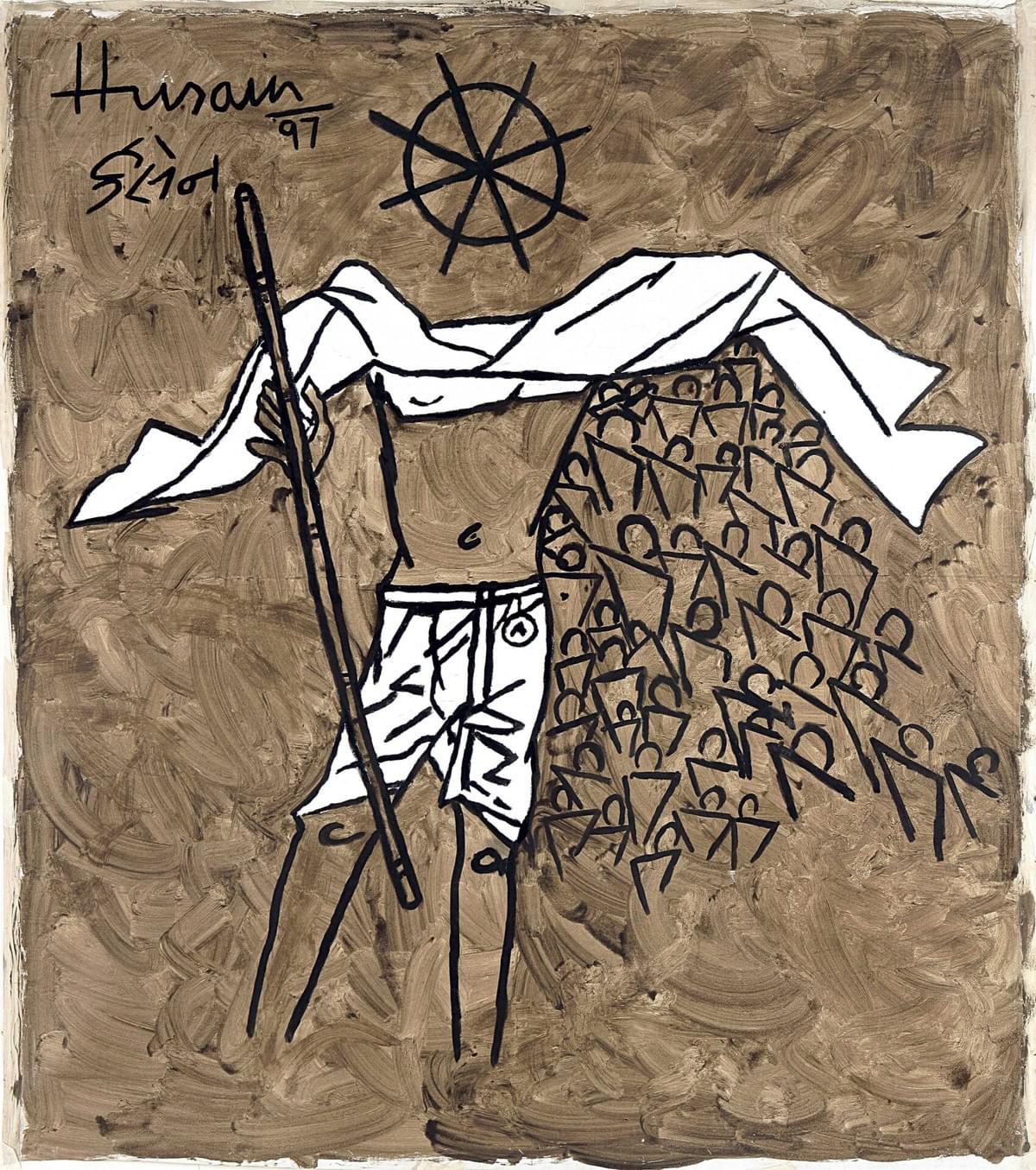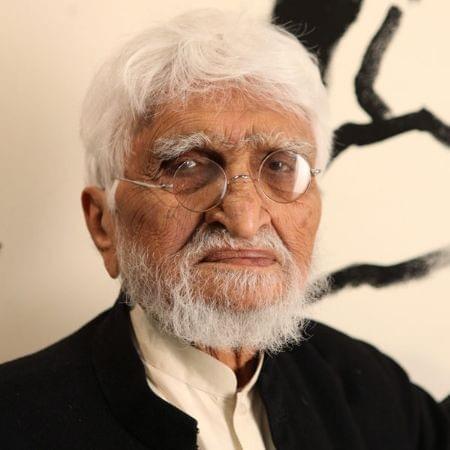Celebrated on August 15th, India’s Independence Day commemorates the nation’s liberation from British colonial rule in 1947. It pays tribute to the countless freedom fighters who sacrificed for the cause and stands as a symbol of unity, diversity, and the spirit of self-determination. India’s independence in 1947 marked not just a political milestone but also a cultural awakening, as artists across the nation broke free from colonial influences to shape a modern Indian identity. This creative wave, however, began decades earlier with the Bengal School of Art, which challenged British artistic ideals and celebrated indigenous traditions.

From the pre-independence masters of the Bengal School to the post-1947 Progressive Artists’ Group, generations of artists have explored the theme of freedom through diverse styles, reflecting a shared national spirit. The nationalist movement and the rejection of colonial dominance deeply influenced modern Indian art, with Santiniketan, founded by the Tagores, emerging as a hub for this transformation. Here, luminaries like Nandlal Bose, Jamini Roy, Mukul Dey, Ramkinkar Baij, Benode Behari Mukherjee, and K.G. Subramanyan carried forward the vision of an art rooted in India’s essence and aspirations.
From Abanindranath Tagore’s Bharat Mata to M.F. Husain’s striking modernism, each brushstroke narrates the journey of a nation discovering its voice through art.
Abanindranath Tagore’s 1905 masterpiece Bharat Mata became an enduring emblem of the nationalist movement. Instead of portraying her as a warrior, Tagore envisioned her as a calm, saffron-clad figure holding a rosary, a sheaf of grain, a book, and a piece of white cloth, symbols representing education, nourishment, and purity.To counter Western modernism, he spearheaded the modernization of traditional Indian court styles like Mughal miniatures and Rajput artistry. His synthesised creations held such potency that British institutions eventually incorporated an Indian national style into their curriculum.

At a time when the nation was searching for its identity, this image offered a compelling visual narrative. His student, Nandalal Bose, carried this vision forward, blending folklore with influences from the Ajanta cave murals. Many of his works drew on epic tales, celebrating India’s rural heritage and timeless heroism.

In 1947–48, Nandalal Bose created one of his most politically significant works when the Constituent Assembly commissioned him to illustrate the original manuscript of the Indian Constitution. Leading a team from Kala Bhavan, Santiniketan, he decorated each page with intricate borders and illustrations that traced India’s journey, from the Indus Valley civilisation to the struggle for freedom. As the country approached this defining moment in history, the diversity of Indian painters infused fresh interpretations into the idea of independence. Some artists used mythological symbols to express solidarity, while others portrayed the dignity of ordinary people through scenes of urban and rural life. This spirit was especially prominent among the emerging Indian modernists, notably the Progressive Artists’ Group (PAG), which was founded in the same year as independence.

Adjusting to the realities of a free yet complex India, artists like M.F. Husain, S.H. Raza, and F.N. Souza played a pivotal role in shaping a distinct artistic language for the nation, one they continued to refine as their careers flourished.

For M.F. Husain, India was a land steeped in cultural richness and history, often reflected in his symbolic depictions of the country’s heritage. His celebration of independence found striking expression in the 1980s with the British Raj series, where he revisited the colonial era through paintings that were both playful and critical. In sweeping, almost theatrical compositions, Husain portrayed British and Indian elites in exaggerated encounters, regal Indian figures in jewel-toned attire alongside coat-clad imperial officers, mocking the absurdity of power and submission. Scenes of royal processions, hunts, and court gatherings unfolded amid elephants, horses, and elaborate patterned backdrops, creating a grand spectacle that subtly hinted at the intertwined dynamics of imitation, resistance, and cultural exchange under colonial rule. Husain's masterful strokes evoke a nuanced dialogue on heritage, politics, and the evolution of a nation grappling with its historical roots.

For S.H. Raza, colour itself became a language of homage. The reds, ochre, greens and blues used by him were inspired by India and the earth’s colours. The earth after the rain, the sweeping fields during the monsoon, the sun kissed walls around the country side and the boundless skies. The colours of India, when blended into the symbolic and geometric shapes he used, gave birth to his iconic Bindu series. These were not mere arrangement of shapes or colour selection but a hallmark of India’s beauty, amity, spirit, and culture. By means of Raza’s art , he was paying tribute to the ideals of independence which is his way of celebrating the beauty of the country blended with remembrance and the sense of belonging. Each brushstroke in Raza’s work pulsed with the rhythm of India’s cultural mosaic, paying tribute to its timeless, kaleidoscopic spirit.

Artists like K.K. Hebbar marked India’s socio-political milestones by incorporating symbols of pride such as the peacock, classical dance forms, and vibrant rural celebrations. Alongside his tributes to India’s cultural roots, Hebbar also captured pivotal moments from the freedom struggle, most memorably in his Dandi March painting, rendered in the colours of the national flag and featuring the iconic figure of Mahatma Gandhi.
F.N. Souza became the voice of this new wave. He painted India’s complexities, the sacred and the profane, the beauty and the grotesque, in ways never seen before. Souza redefined Indian modern art, inspired future generations, and brought Indian expressionism onto the world stage. Independence Day is not only a time to celebrate the nation’s liberation but also to honour the artists whose work gave visual expression to its aspirations, struggles, and identity. From the evocative imagery of the Bengal School to the bold statements of the Modernists, these visionaries both documented the journey to freedom and defined the vocabulary of modern Indian art. Their creations continue to embody resilience, unity, and pride, proving that the story of independence lives on through art as much as in history.

In contemporary times, artists such as Atul Dodiya, Jagannath Mohapatra, and others have explored India’s layered socio-political realities through paintings, sculptures, and installations. Their works act as reflective mirrors of the nation’s cultural, economic, and ideological diversity, addressing issues of identity, inequality, environmental change, and urban growth.
Engaging with the tension between tradition and progress, these artists amplify voices that shed light on the challenges, hopes, and transformations shaping India’s evolving society.
